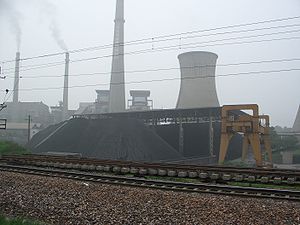China will grow on a scale the world has never seen before. Can that growth be green?
The environmental consequences of China's economic growth are both well-known and horrifying: more cars, more coal and more toxic crud fouling its streams and rivers. Less appreciated are the reasons for hope.
"This is a critical year, really a transformational moment," says Li Lu, the chairman of Himalaya Capital Management and a leading candidate to take over for Warren Buffett when the investing guru eventually retires. (Li's chances improved recently when leading rival David Sokol parted ways with Berkshire Hathaway (BRKB).)
The Chinese government is mulling a five-year plan with potentially dramatic goals for reductions in pollution, Li told an audience at Fortune's Brainstorm Green conference this week. China's two major power grids are both testing systems that can store green energy from wind and solar. If they prove efficient in ongoing trials, Li believes, it will open the door to the government rolling out clean energy "on a gigawatt scale in a short amount of time."
The driving force behind the coming green wave -- if it indeed materializes -- will not be the massive carbon dioxide output by China, which has passed the U.S. as the biggest greenhouse gas emitter. Instead it's the sulfer dioxide the country's coal plants emit, he says. "The real threat of coal in China is not the CO2 it's the SO2. It's killing people," Li says.
Li believes that the best bet for quickly and dramatically slashing its reliance on coal are deposits of natural gas buried deep underneath the country. While not as well understood as the massive shale deposits in the U.S. that have boosted the production of natural gas and sent its price plunging, Li is confident China's shale holds similar good news.

No comments:
Post a Comment